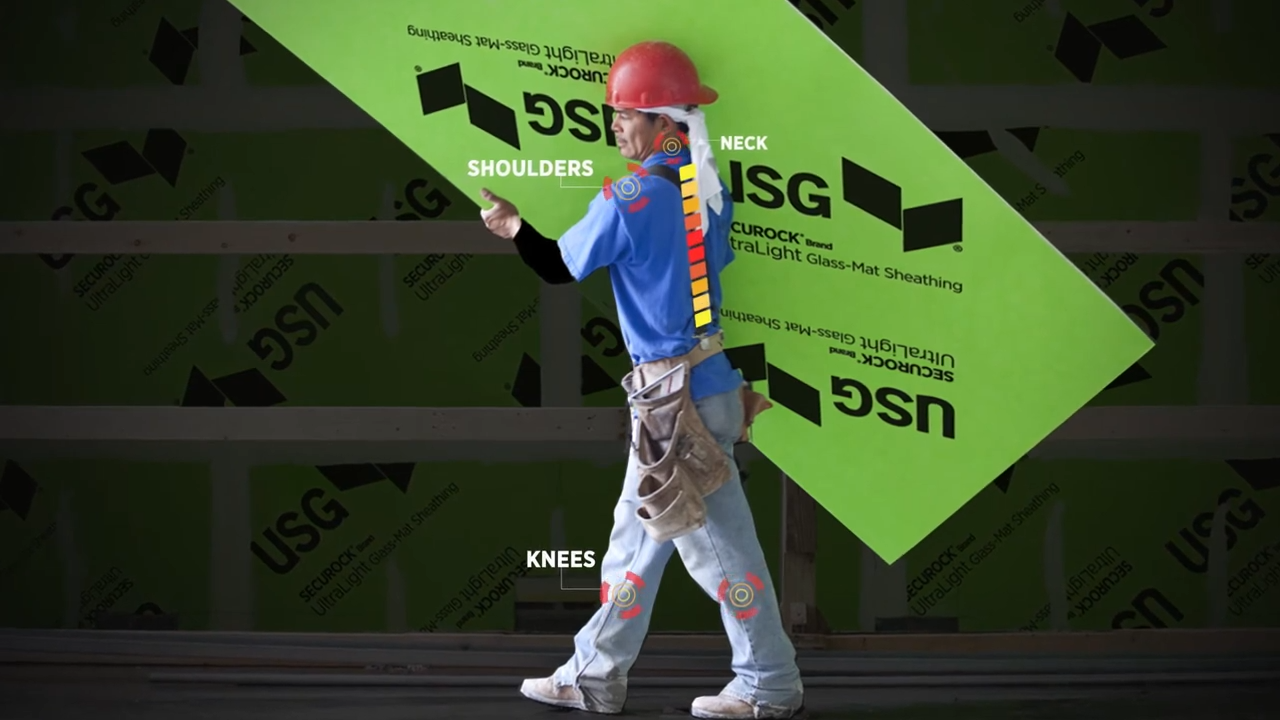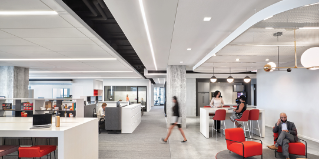Sign In
You're All Set
Welcome back! You are now signed in.
You have been logged out
You have been logged out due to inactivity
Forgot Password
Please enter the email address you used to create the account. We'll send you a link that lets you create a new password.
You're All Set
Please check your email. Click the link in the email to create a new password.
Reset Password
You're All Set
Success! Your password has been updated.
Change Password
You're All Set
Success! Your password has been updated.
National Safety Month: USG’s UltraLightweight Innovation
Throughout the storied history of USG, we have considered safety a core value and moral imperative; not just for our employees but for the entire construction industry, as evidenced by our charter membership in the National Safety Council.
While safety is paramount in the construction industry, it goes further than just hard hats and steel-toed boots. Every construction manufacturer should be responsible for going above and beyond to ensure that the products and solutions they offer are safe on both the jobsite and the manufacturing floor.
Overexertion and Musculoskeletal Disorders
The construction industry is vital to the built environment, but it is also one of the most dangerous professions; each year, about 1% of construction workers suffer a fatal injury, which is the highest rate in any industry. Additionally, non-fatal injuries can still pose long-term health issues for workers, impacting their lives after retirement.

Overexertion is a leading cause of overall nonfatal injuries in construction and is often acknowledged as a major cause of musculoskeletal disorders (MSDs)1. From the neck to the shoulders, to the back and the knees, there is an increased potential to cause injuries like sprains, strains, and tears from overexertion when manually lifting heavy loads while on the jobsite, increasing the likelihood of developing into chronic conditions and permanent disabilities; in fact, a 2012 study found that 40% of construction workers over the age of 50 reported experiencing chronic back pain2 as a result of their profession.
Preventing overexertion can limit the potential of MSDs that affect the muscles, nerves, blood vessels, ligaments, and tendons of workers. Workers are exposed to risk factors on the jobsite work, such as lifting heavy items, bending, reaching overhead, pushing and pulling heavy loads, working in awkward body postures, and performing the same or similar tasks repetitively. The Occupational Safety and Health Administration (OSHA) cites ergonomic solutions to address MSD injury risks, such as implementing physical change to the workplace, which can eliminate or reduce risk. This includes using devices to lift and reposition heavy objects as well as reducing the weight of a load to limit force exertion3.
UltraLightweight Lightens the Load
Acknowledging the dangers that workers face on the jobsite and raising awareness helps contribute to higher safety standards and innovations in safety equipment. Manufacturers can take a more active role in construction safety by developing products and materials that prioritize worker safety and health.
One of the most impactful ways this is accomplished at USG is through the implementation of lightweight technology, which creates a lighter load to manage and maneuver during installation. From the industry’s first ½ in. lightweight gypsum panel to glass-mat sheathing panels that weigh up to 15% lighter than the competition, the Sheetrock® Brand and Securock® Brand portfolios feature products that can get the job done quickly, easily, and safely.
Sheetrock® Brand UltraLight Panels
The industry’s first lightweight 1/2 in. (12.7 mm) gypsum panels feature proprietary core and paper technologies, resulting in a high strength-to-weight ratio composite design. The noncombustible gypsum core is encased in 100% recycled face and back papers, and the face paper is folded around the long edges to reinforce and protect the core, while also offering superior score and snap for a cleaner edge and faster, more streamlined installation.
Sheetrock® Brand EcoSmart Panels Firecode® X
As the first ultralightweight Type X gypsum panel specifiable for sustainability as a single-panel solution for both walls and ceilings, these lightweight 5/8 in. (15.9 mm) enhanced proprietary Type X panels are also UL Classified for fire resistance and can be used in any UL Design in which UltraLight Innovation Type X (ULIX™) panels are listed.
Securock® Brand UltraLight Glass-Mat Sheathing
In addition to being up to 15% lighter than competing sheathing panels, these 1/2 in. (12.7 mm) lightweight glass-mat sheathing panels prioritize enhanced maneuverability along with moisture and mold resistance. With a noncombustible, moisture-resistant gypsum core encased in a coated fiberglass facer mat, jobsite productivity can be optimized for maximum coverage of fluid-applied air/water barrier systems.
Securock® Brand UltraLight Glass-Mat Roof Boards
For exceptional bond and low surface absorption, these high-performance roof boards for low-slope commercial roofing systems feature a specially treated lightweight core. The high-performance glass-mat facer protects against fire, mold, and moisture, while the high-quality mat makes it easier to cut and handle on the jobsite with less skin irritation and itchiness than competitive products.
The USG Solution
USG lightens the load to give workers a vision of the future of construction materials—one that is lighter, easier, stronger, and a lot safer.
As a leader in the industry, USG promotes a culture of “Safety First” that permeates at every level of manufacturing, from the sourcing of raw materials to the eventual transportation and use of products at the jobsite. This is why we actively monitor safety breakthroughs across industries to learn from and apply to our own methods of work.
In fact, every adjustment of a formulation can be traced back to making products that uphold our safety commitment to our employees, as well as our customers. At USG, we champion safety across the company and on the jobsite:
- We review the integrity of our raw material supply to verify its safety and quality.
- We routinely monitor exposures related to the manufacture and use of our products.
- We develop and communicate procedures designed to ensure our products are used safely.
- We work to create products that solve construction needs and mitigate safety challenges.




